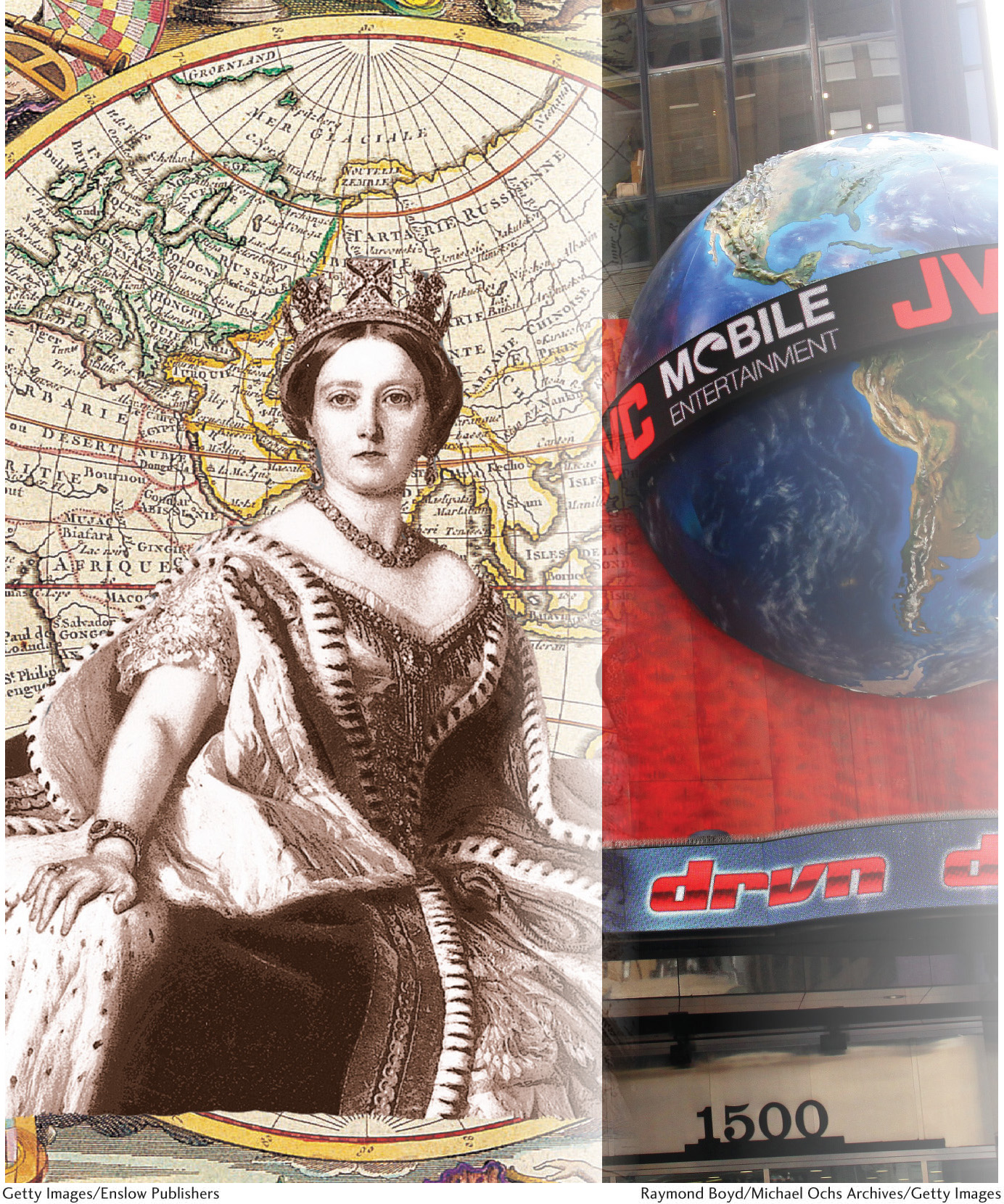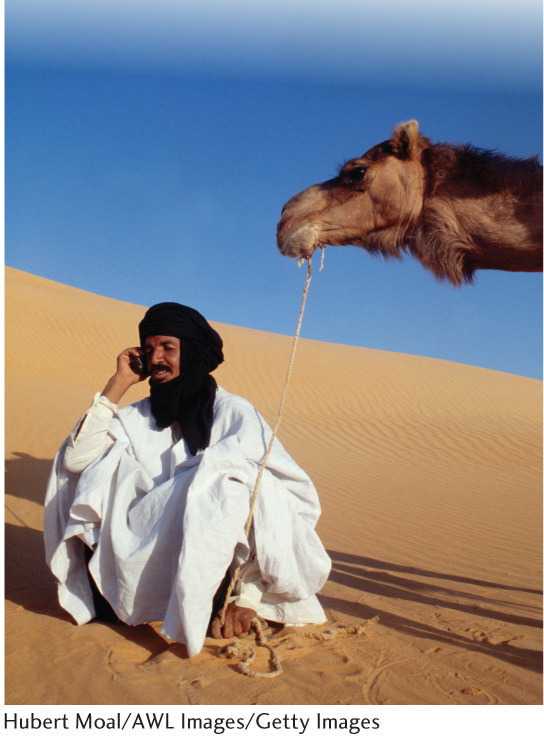The Cultural Geography of the Future
456
CHAPTER 11
ONE WORLD OR MANY?
The Cultural Geography of the Future

What do these images convey about empire and globalization, and their similarities and differences?
Two images of global reach, more than a century apart (Queen Victoria and world map; a JVC advertisement).
(Left: Getty Images/Enslow Publishers; Right: Raymond Boyd/Michael Ochs Archives/Getty Images.)
Go to “Seeing Geography” to learn more about these images.
457
LEARNING OBJECTIVES
▪11.1
Describe the possible futures of place and region, and explain their driving forces.
▪11.2
Explain how current trends will shape future mobilities.
▪11.3
Analyze the relationship of contemporary globalization to historical processes and its likely effects on the future.
▪11.4
Relate how the continuation of current globalizing trends will shape future nature-culture relations.
▪11.5
Identify likely future landscapes.
This final chapter is about the future. Unless one is precognizant, writing about the future is “a fool’s game.” The best we can do is collect evidence about past and present conditions, examine ongoing trends, and then let our imaginations go to work- Even when we do this well, it is difficult to predict the outcome of anything with certainty. Who, for example, would have thought that we would still be combating slavery and the slave trade in the twenty-first century? It is even more difficult to predict wholly new phenomena. Who would have predicted the dramatic social changes that the revolution in information technology is bringing about, especially the ascendance of social media and their impacts on politics and culture around the world? Despite the lack of certainty, looking ahead is a necessary activity if we want to be at all prepared for the world in which we will build our careers, raise our families, and work toward the fulfillment of ourselves and others. The pervasive trends in globalization, whose effects we have featured throughout the pages of this text, will have a profound influence on the cultural geographies of the future. As noted in Chapter 1, the phenomenon of globalization has created an interlinked world of instantaneous communication where people, goods, and money move increasingly as if international borders did not exist. While there’s no denying the general trends produced through globalization, we will see in this chapter that the future is far from predetermined by them.
458
We are posing perhaps the most essential and difficult cultural geographical questions of all in this chapter. Will our future contain one world or many? Will we face a world where more people will have more opportunities and choices, or where deprivation and powerlessness will spread? Will we witness a global-scale process of cultural diversification or of homogenization? Are we headed toward cultural diversity or cultural monotony?
Check the latest news online almost any day and you can read about globalization, though the word may not always be used. New suburbs in India are built to resemble those in Southern California; the citizens of the United Kingdom lament membership in the European Union, worrying that the forces of globalization will erode their distinct English identity; commercial loggers deforest Rendova Island in the Solomon Islands and in the process destroy the culture and livelihoods of the native Haporai people; and so on—endlessly, it seems.
But, does globalization truly have the ability to render cultural differences irrelevant? Can’t groups of people selectively choose from what globalization has to offer and still retain control of their cultural identity and attachment to place (Figure 11.1)? Does globalization act to homogenize the world or, instead, to widen the differences between the haves and have-nots? In fact, much of the resistance to globalization is based on the belief that it enriches and empowers the few at the expense of the many, heightening class differences.

Many—perhaps most—geographers believe that the future will continue to contain many worlds. They speak of profound and irreducible cultural contrasts and of the capacity of indigenous peoples to weave Western elements into their own cultures, creating new and distinct hybrids. Globalization, they argue, produces different results in different lands, while globalization itself is subject to transformation through interactions with diverse cultures. The global need not and cannot abolish the regional or the local. In fact, throughout the chapter, we will explore examples of groups using the technologies and networks of globalization in campaigns that defend local cultural geographies and reassert the relevance of the local. Often local cultures are not merely defending ancient tradition but rather are interacting with outside influences to produce new and distinctive forms of cultural expression. So which view is correct or most likely? Will it be one world or many? Perhaps the forces of both diversification and homogenization will continue to operate with unpredictable results. The future is unknowable, but it can be enlightening to speculate about the possibilities, beginning with the future of regions.